Implant Bridge For Front Teeth: The Wonderful Solution For High-End Aesthetic
What is An Implant Bridge For Front Teeth?
An Implant Bridge for front teeth is an excellent method for replacing multiple missing teeth in the front positions (including 6 upper and 6 lower front teeth). This method typically involves one or more implants placed in the jawbone to support a dental bridge. Like traditional bridges, an Implant Bridge for front teeth can be made from materials such as gold, alloys, and porcelain. Among these, porcelain is the most commonly used material due to its superior durability and aesthetic qualities, as it closely matches the color of natural teeth.
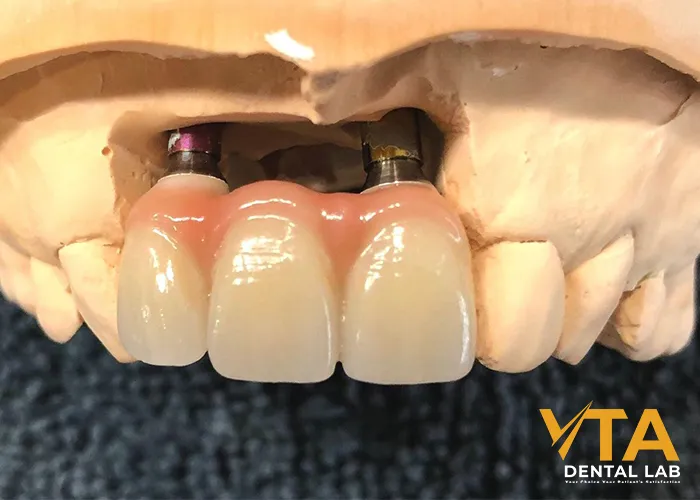
Popular Solution Indicated for Cases of Multiple Front Tooth Loss
Implant-Supported Bridge: This is the most common method used in cases of multiple adjacent tooth loss. The bridge is attached to implants that are securely fixed directly into the jawbone. It is indicated in cases of good jawbone density where high stability and aesthetics are required, such as in the front tooth area.
Traditional Bridge: Indicated in cases where adjacent teeth are healthy and can support the bridge, this option can effectively replace one or more missing teeth. However, it requires the adjacent teeth to be slightly filed down, which poses a limitation for patients who wish to preserve the structure of their neighboring teeth.
Partial Dentures: Removable partial dentures can be a quicker and more economical solution for replacing multiple missing teeth, especially when implants are not an option.
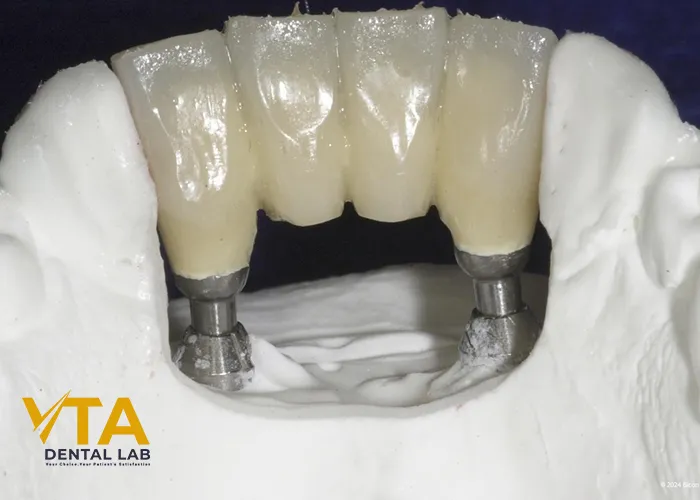
Pros And Cons Of Implant Bridge For Front Teeth
Pros Of Implant Bridge For Front Teeth
Durability and High Aesthetic: In a position that requires absolute aesthetics, such as the front teeth, aesthetic demands are paramount. An Implant bridge for front teeth is custom-made to match the color and shape of the existing teeth, allowing it to blend perfectly with the patient’s smile. On the other hand, implants’ strong fixation and load-bearing capacity provide superior chewing ability, preventing any shifting or movement during food consumption. Their high durability allows them to last many years, even a lifetime if properly cared for.
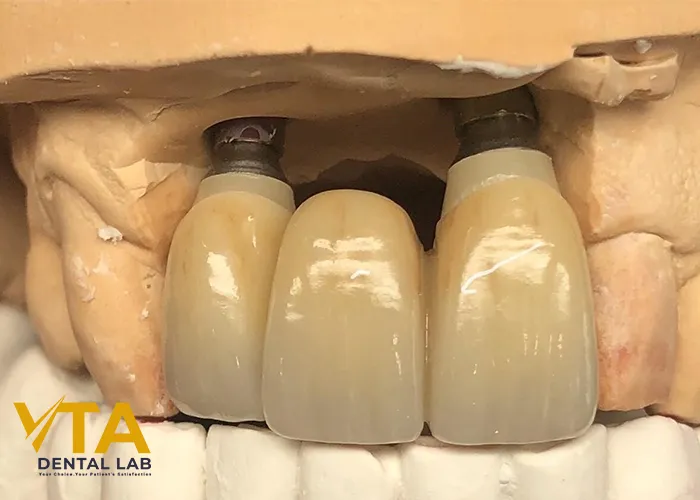
Reducing Bone Loss and Maintaining Jaw Structure: When a tooth is lost, the underlying jawbone can deteriorate due to a lack of stimulation. However, implants simulate the natural tooth root by integrating with the jawbone through the process of osseointegration, helping to reduce jawbone resorption. This integration also stimulates jawbone development, thereby reducing long-term facial asymmetry and deformation, and maintaining the patient’s natural facial structure.
Preserving Adjacent Tooth Structure: An Implant Bridge for front teeth does not require the adjacent teeth to be drilled to create anchor points for the bridge, as is the case with traditional bridges. This helps to preserve the healthy natural tooth roots.
Easy Cleaning and Maintenance: The strong connections between the implant and the abutment, as well as between the abutment and the bridge, make the implant bridge easier to maintain and clean compared to others such as traditional bridges or removable dentures.
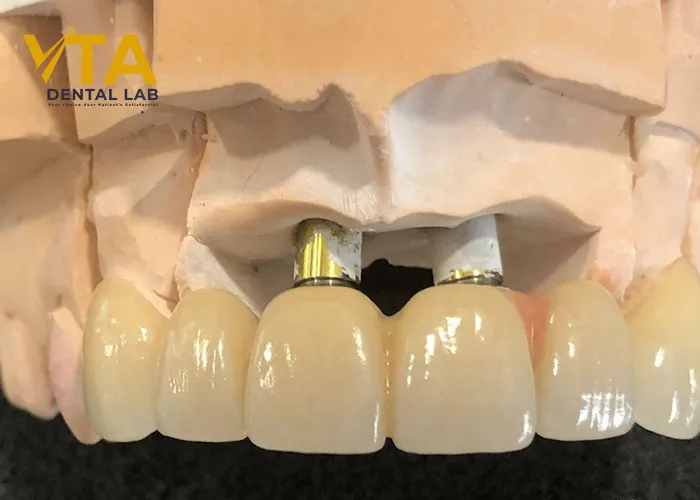
Cons Of Implant Bridge For Front Teeth
High Cost: One of the disadvantages to consider when choosing this method is the relatively high cost compared to other traditional methods, especially for patients with financial constraints.
Complex and Time-Consuming Process: The process of an implant bridge for front teeth involves multiple steps, from the surgical placement of the implant to the recovery phase, which can take anywhere from 3 to 6 months or longer. Patients need to attend several appointments for consultations, implant placement, bridge attachment, and regular follow-ups, making it significantly more complex than traditional methods, which typically require only 1 to 2 appointments.
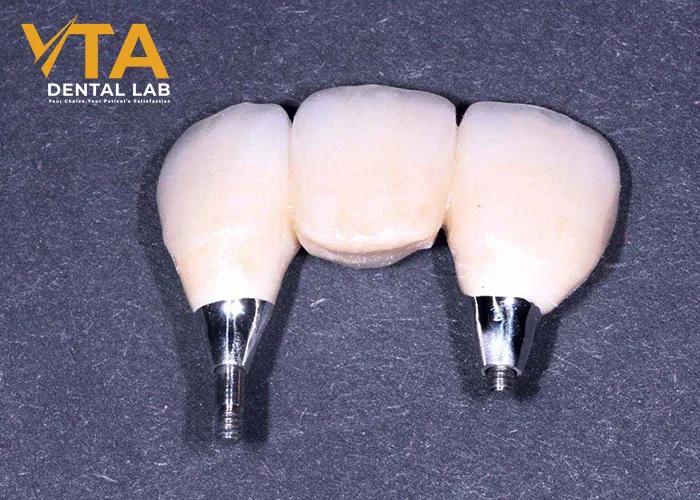
Risk of Complications: Like any surgery, an implant bridge for front teeth carries the risk of complications such as infection, pain, or even failure if the implant does not integrate properly with the jawbone.
Not Suitable for Every Case: Certain health conditions or medical issues may render an implant bridge for front teeth unsuitable, such as uncontrolled diabetes or patients with insufficient jawbone volume.
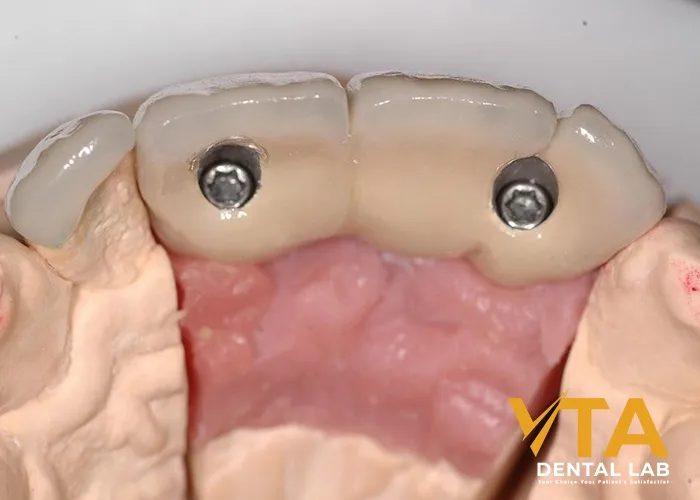
Summary
Losing several teeth in the front can be a source of great worry, as it not only affects your ability to chew normally but also impacts your aesthetics when smiling, leading to feelings of embarrassment and low self-esteem. Fortunately, cosmetic dentistry treatments can restore both function and aesthetics to your front teeth.
There are various methods available for replacing multiple missing front teeth, including traditional bridges, removable dentures, and Implant Bridges for Front Teeth. Each method has its advantages and disadvantages, as well as specific requirements for implementation. Therefore, to choose the most suitable option for yourself, it’s advisable to consult with a dentist before making a decision.
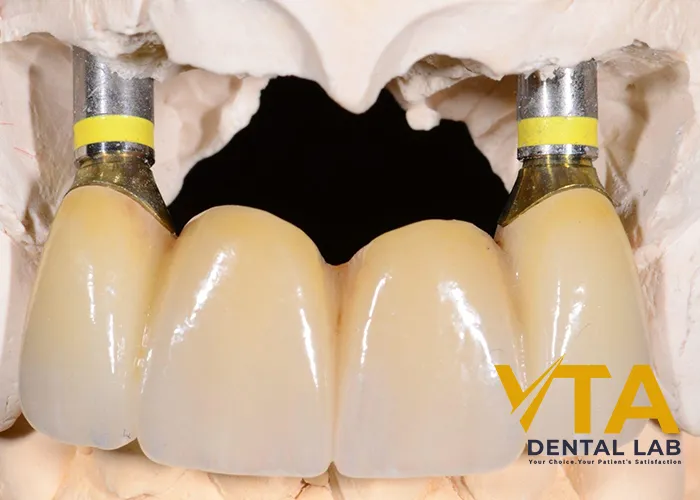
VTA Dental Lab is also eager to help perfect your smile; our laboratory offers a wide range of products that provide optimal solutions for cases of multiple missing front teeth. Contact us today if you need more detailed information: az@vtadentallab.com or ca@vtadentallab.com